Small overlap front: driver-side
Rating applies to 2006-13 models
Tested vehicle: 2012 Lexus IS 250 4-door
The Lexus IS was redesigned for the 2006 model year. There are two models, the IS 250 and IS 350, depending on engine size.
| Evaluation criteria | Rating |
|---|---|
| Structure and safety cage | |
| Driver injury measures | |
| Head/neck | |
| Chest | |
| Hip/thigh | |
| Lower leg/foot | |
| Driver restraints and dummy kinematics The dummy’s head remained in contact with the frontal airbag, but the head was still vulnerable to contact with forward side structure because the steering column moved 13 cm to the right as the dummy moved to the left. The driver's seat tipped forward and toward the B-pillar. Furthermore, at forwardmost excursion the head had moved outside the open side window, partially due to the lack of a side curtain airbag deployment and leaving the head vulnerable to contact with side structure and outside objects. | |

Action shot taken during the small overlap frontal crash test.
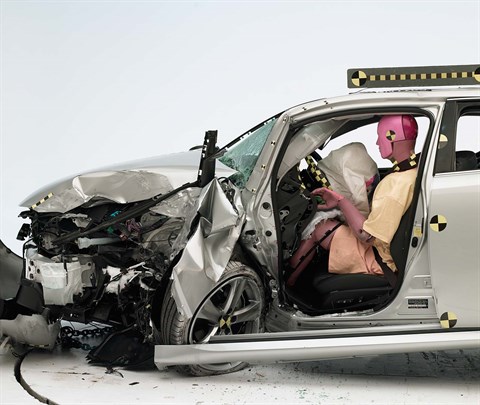
The dummy's position in relation to the door frame, steering wheel, and instrument panel after the crash test indicates that the driver's survival space wasn't maintained well.

Although the dummy's head remained engaged with the frontal airbag during the crash, it became vulnerable to hard contacts because the steering column moved too far to the right and the head moved outside the open side window.

Intrusion into the occupant compartment was extensive. The dummy's left foot was trapped by intruding structure as the left front wheel was forced rearward during the crash. The right foot was trapped beneath the brake pedal.
Moderate overlap front: original test
Rating applies to 2006-13 models
Tested vehicle: 2006 Lexus IS 250 4-door
The Lexus IS was redesigned for the 2006 model year. There are two models, the IS 250 and IS 350, depending on engine size.
| Evaluation criteria | Rating |
|---|---|
| Overall evaluation | |
| Structure and safety cage | |
| Driver injury measures | |
| Head/neck | |
| Chest | |
| Leg/foot, left | |
| Leg/foot, right | |
| Driver restraints and dummy kinematics | |
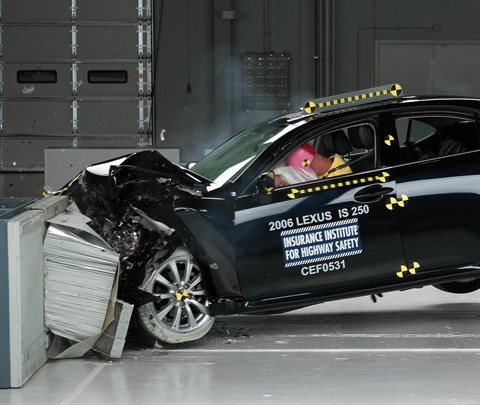
Action shot taken during the frontal offset crash test.

The dummy's position in relation to the steering wheel and instrument panel after the crash test indicates that the driver's survival space was maintained well.
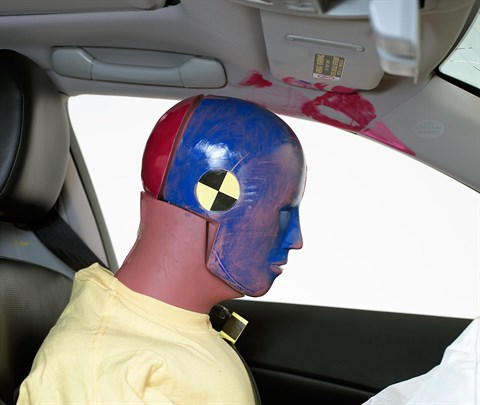
Smeared greasepaint indicates where the dummy's head hit the A-pillar, sun visor, and roof rail during rebound. Head accelerations from these hits were low.

Intrusion into the driver's space was minimal, and all leg and foot injury measures were low.
Side: original test
Rating applies to 2006-13 models
Tested vehicle: 2006 Lexus IS 250 4-door with standard front and rear head curtain airbags and standard front seat-mounted torso airbags
The Lexus IS was redesigned for the 2006 model year. There are two models, the IS 250 and IS 350, depending on engine size.
| Evaluation criteria | Rating |
|---|---|
| Overall evaluation | |
| Structure and safety cage | |
| Driver injury measures | |
| Head/neck | |
| Torso | |
| Pelvis/leg | |
| Driver head protection | |
| Rear passenger injury measures | |
| Head/neck | |
| Torso | |
| Pelvis/leg | |
| Rear passenger head protection | |
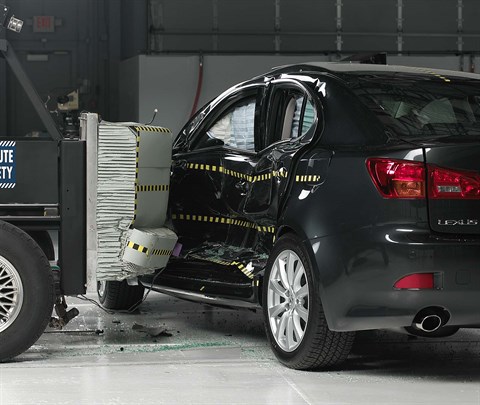
View of the vehicle and barrier just after the crash test.
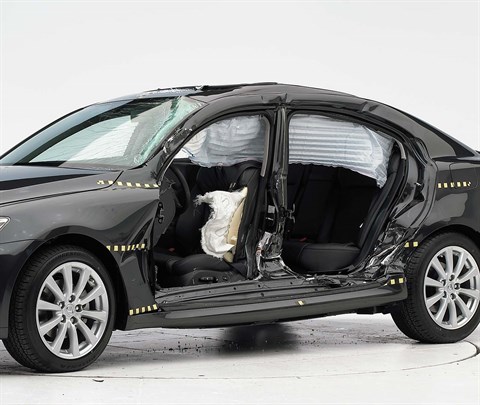
View of the vehicle after the crash with doors removed, showing the side airbags and damage to the occupant compartment.
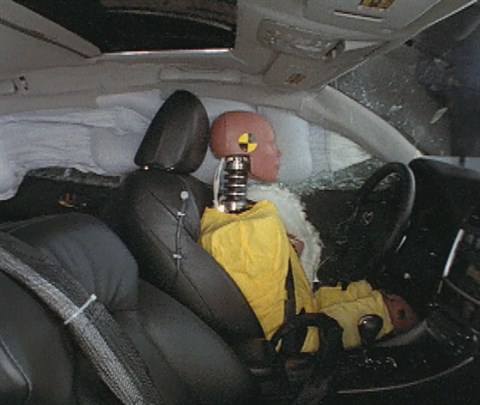
Action shot taken during the side impact crash test showing the driver dummy's head was protected from being hit by hard structures by the side curtain airbag.

Smeared greasepaint shows where the rear passenger dummy’s head was protected by the side airbag.
Roof strength
Rating applies to 2006-13 models
Tested vehicle: 2011 Lexus IS 350 4-door
| Overall evaluation | |
|---|---|
| Curb weight | 3,580 lbs |
| Peak force | 14,093 lbs |
| Strength-to-weight ratio | 3.94 |
Head restraints & seats
Seat type: Power leather seats
| Overall evaluation | |
|---|---|
| Dynamic rating | |
| Seat/head restraint geometry |
About the head restraint & seat test
Currently, IIHS tests apply only to front seats.
